Harry Hitchenes, his models plus some thoughts on the future
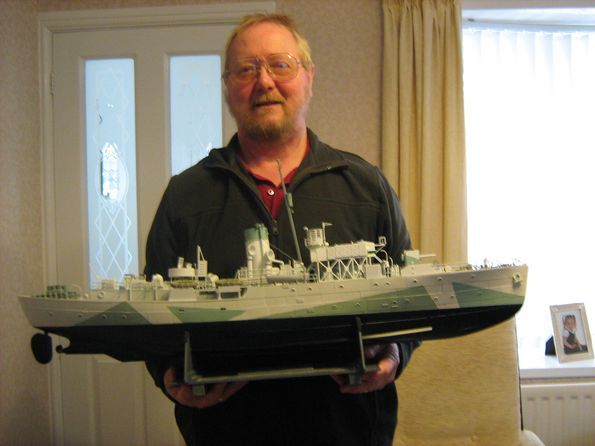
At the moment I am not a member of any boat club as I have been flying r/c model aircraft for some years, but I was a member of Tynemouth MBC for a number of years from the mid-1970s. Like many other modellers I found that family and business commitments began to take up all my time, so the models went on the back burner for a number of years. During my time at Tynemouth I made many good friends and learned a lot from them. After semi-retiring five years ago I started again to sail. My wife and I still ran our small business which took up every weekend, so I was unable to sail on normal club days. Last year we decided to ease back on the business and now look forward to having some weekends available so I can start to think about joining a club again.
Enjoy more Model Boats Magazine reading in the monthly magazine.
Click here to subscribe & save.
If anyone thinks that it makes no difference to join a club then read on! Last summer I managed to get down to Tynemouth when the club was open. As I walked towards the clubhouse I could see tables erected outside with various members sitting around them. At one of the tables were three old friends, Bill Carpenter, Bill Thompson and Jake Kelso. Between these three gentlemen can be found the answer to any model problem you may have. A number of other members known to me were sailing, but sadly a few old friends had been called to the great workshop in the sky. As I approached, I was greeted with: ‘Hi Harry, the kettle’s just boiled. Make yourself a cup of coffee and there are biscuits on the shelf.’ After grabbing a coffee and biscuit I sat down and we talked about the many aspects of our hobby and it was like I had never been away.
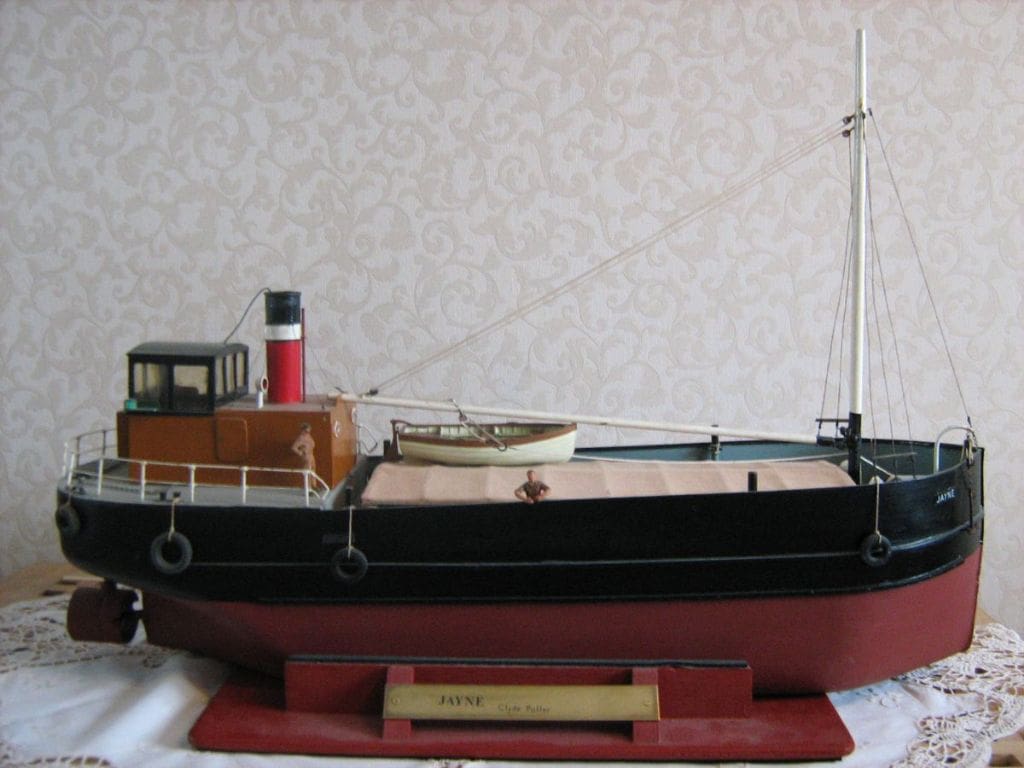
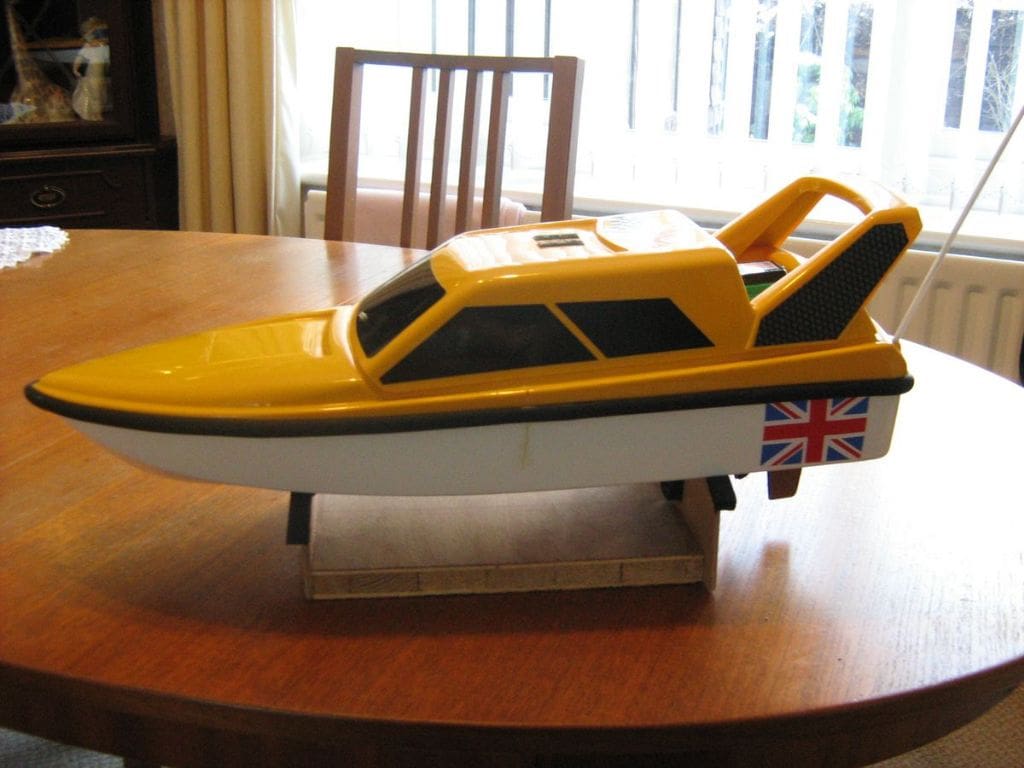
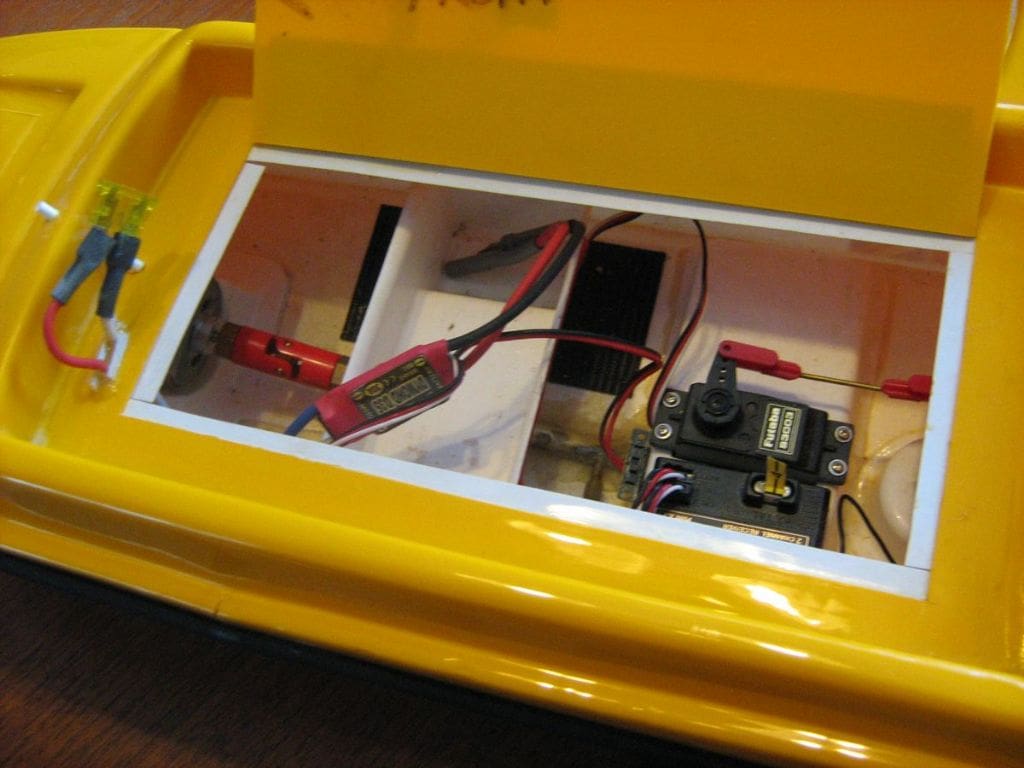
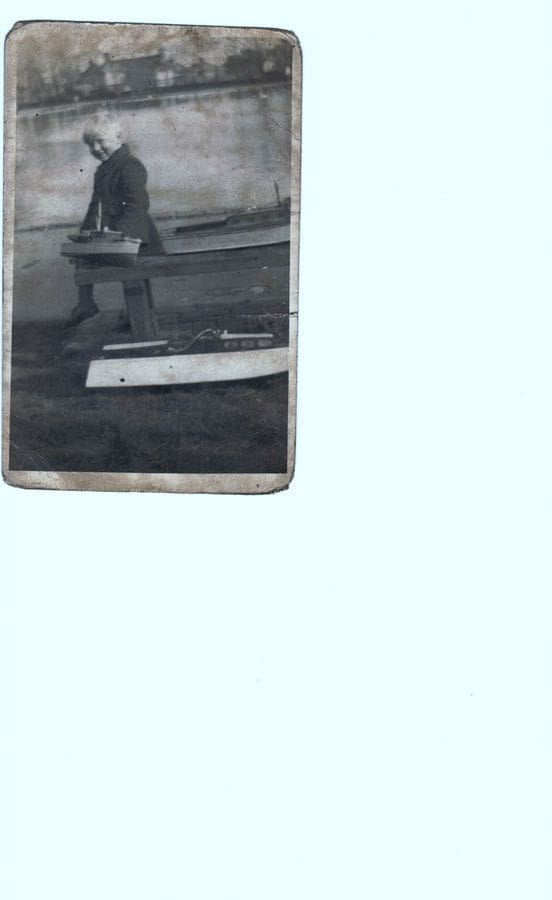
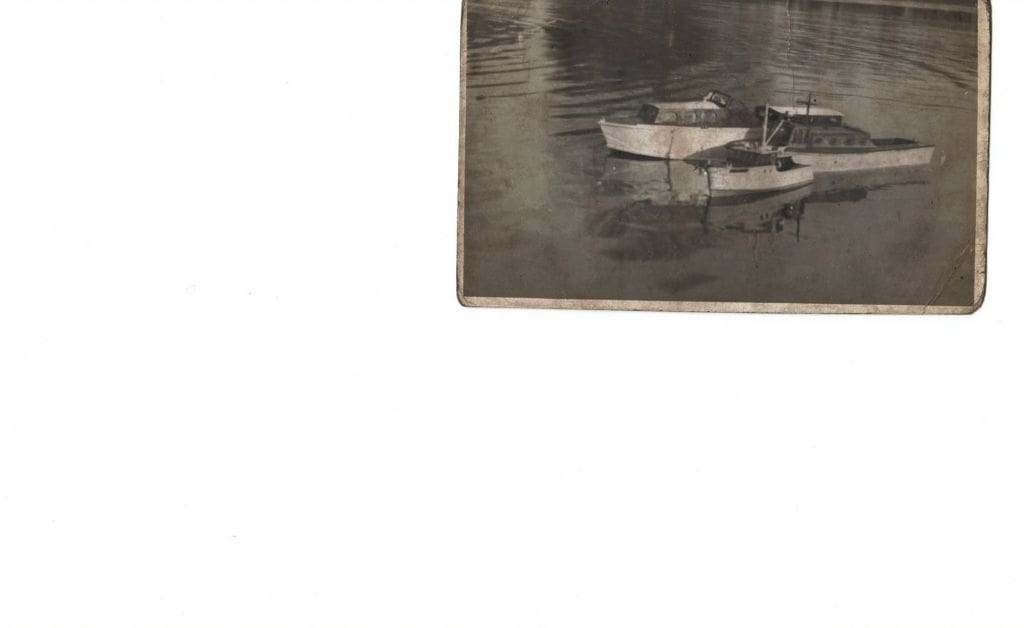
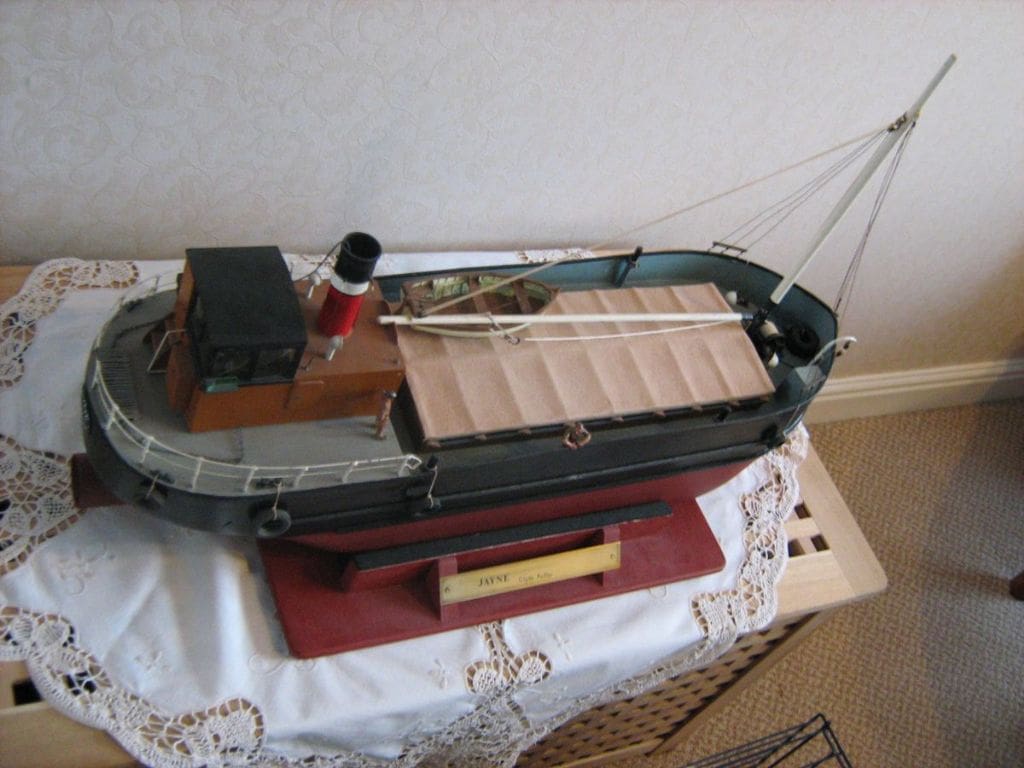
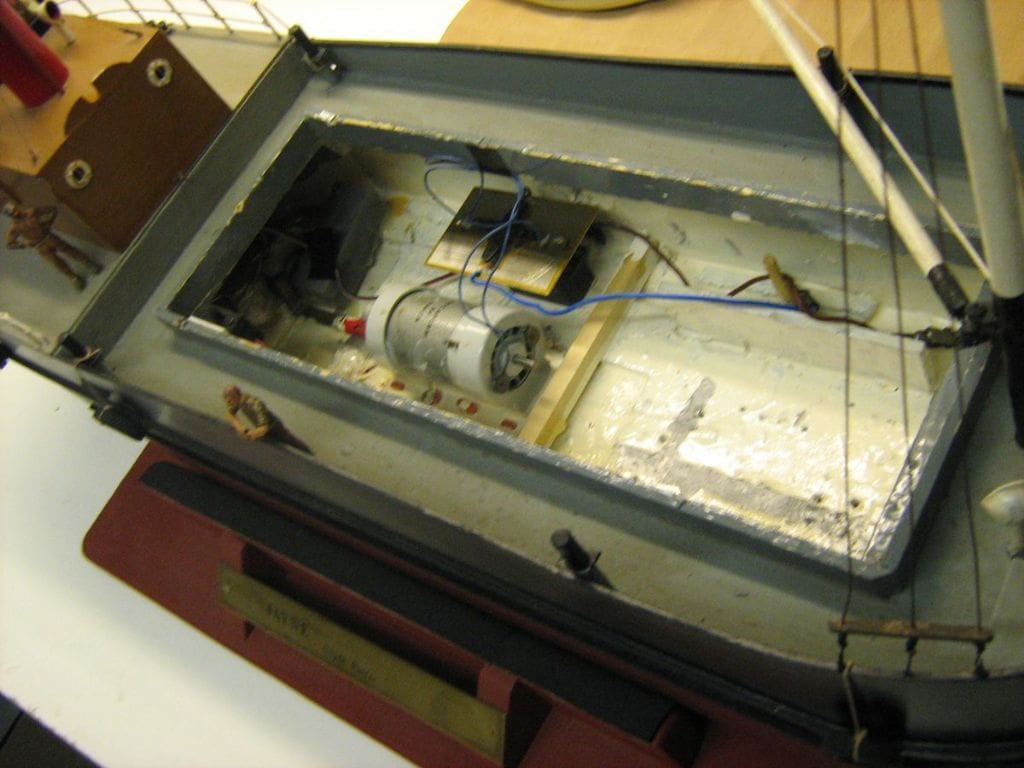
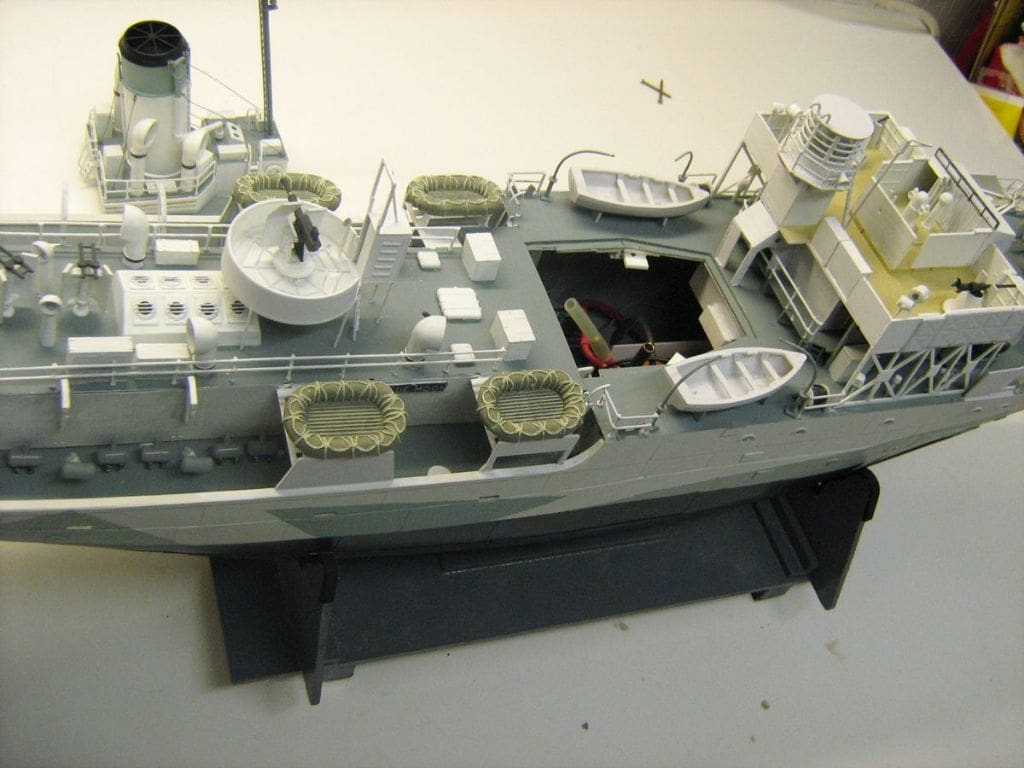
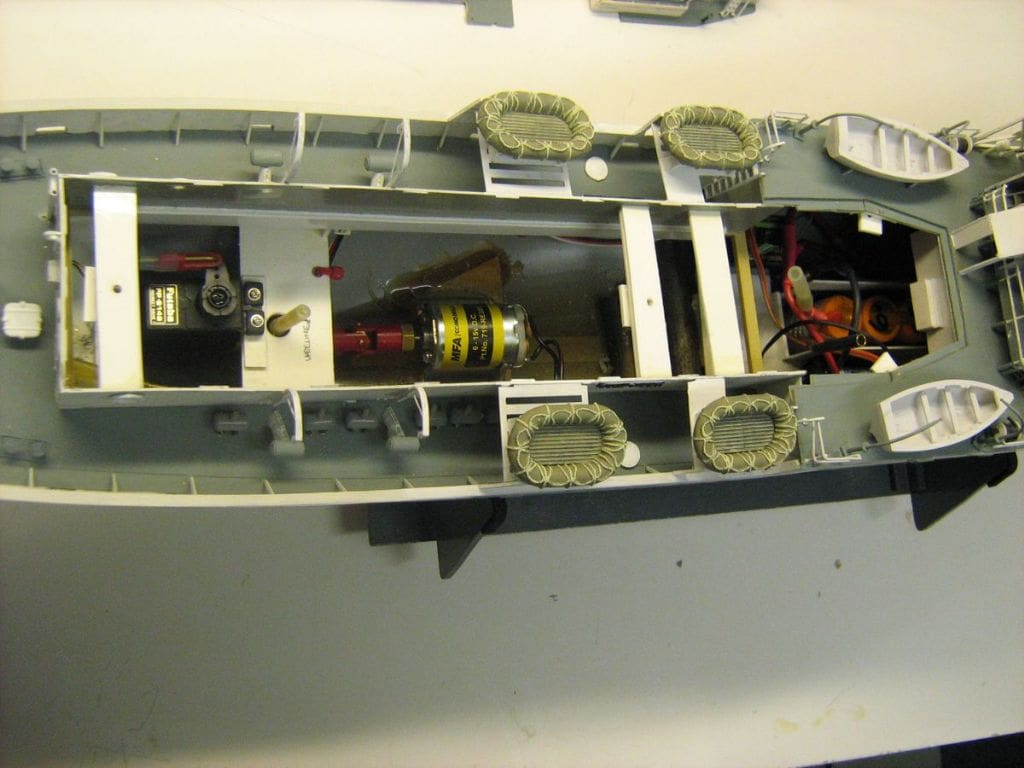
Current models
The Flower class corvette is of course from the Revell plastic kit. I have built this model once before and it sailed beautifully for a number of years until it rammed a landing stage and all but disintegrated which was due to a radio problem, honest! The new version is almost finished and will soon be sailing. I have made two sections of the deck removable. Each is held down by two bolts. I made four rectangular blocks of several laminations of 2mm styrene card which were then drilled to accept the bolts. The nuts were then put on the bolts for half a dozen turns and the bolt heated with a soldering iron until the nut melted into the plastic and was level with the bottom of the block. Once cooled, a further lamination with a bolt size hole in it was added so that the nut could not escape. These blocks were then glued either under the deck or under the cross pieces. With a bit of Vaseline around the edges, the removable sections are completely waterproof. Drive motor is an MFA 385 running on 6 volts via an Mtroniks Viper Marine 15 esc with a homemade brass three bladed propeller with almost no pitch and bath tests indicate all should be okay. This is not a model of any specific vessel as she is meant to represent a typical war weary corvette and is named Blue Moon. Anyway I have found that if you pick on a specific ship at a specific time there is always some ‘clever clogs’ who will tell you that this ship was not fitted with the left hand thread widgets during the period modelled!
Next is Jayne, my good old faithful Clyde Puffer. Originally started in 1972, she is all balsa and ply. I drew the plans myself and it is based on several different ships. The model is 30 inches long by 8 inches beam. The bow and stern sections are bread and butter with a box section middle. The model was first sailed as a free running craft powered by a D.C. Merlin 0.75cc diesel engine with the exhaust directed up the funnel, but by 1975 was converted to electric with two channel r/c. That motor was later replaced with a geared Decaperm controlled by a Bob’s Board wiper type controller and this is exactly how she still operates.
Eagle eyed readers will notice the Kort nozzle at the stern. Soon after joining Tynemouth MBC I entered the puffer, fitted with the normal rudder, in one of the steering competitions. Needless to say she was impossible to control going astern and was soundly thrashed by several small fishing boats fitted with Kort nozzles. I was discussing this with Bill Thompson and told him that I might build such a small fishing boat, but his reply was pure Thompsonesque. He asked if I had read the Para Handy books. In any of these, was Para ever asked to reverse the Vital Spark in a dead straight line between several markers for at least six times the length of the vessel? No, he wasn’t, so the answer was simple. You are asking the model to do something the real one cannot do. To remedy that, simply install a longer propeller shaft and fit a Kort nozzle. As a result she then sailed perfectly, although no longer strictly pro-typical. She can sail as gently as the full size prototype but when necessary she can sail arrow straight in reverse and spin around almost in her own length. I think this is the first insight I had into Bill’s extraordinary personality.
Last is a Club 500. She is a bog standard kit fitted with the usual 540 motor running on 7.2 volts with a standard 30 Amp aircraft esc which is forwards only. The hatch is hinged with Duck tape and the other three edges are sealed with electrical insulating tape. An external 20 amp car type fuse on spade terminals is connected prior to fitting the cabin top ready for running. The battery tray is held in place with Velcro and can be moved forwards and backwards a little depending on how rough the water is. This can have a significant effect on performance.
So that’s me and some of my current fleet. The next project is the Metcalf Molding’s Graemsay which with some new six channel radio gear, was a sixtieth birthday present in 2008, but I am only just now starting it.
Early years
The chap in the old b&w picture is myself when around 6 or 7 years old. It was taken at Paddy Freeman’s Lake, Newcastle upon Tyne, sometime in the mid-1950s.
Even though part of it is hidden many of you will instantly recognise the Adamcraft Seaplane Tender next to me on the seat. This belonged to my dad and was powered by an E.D. Competition Special 2cc engine. The other very recognisable boat is the Wavemaster. This belonged to George Sanderson, a family friend, and was powered, I think, by an E.D. Racer 2.46cc engine. The boat alongside me was a Christmas present, made by my dad. I cannot remember any details and would be happy if any readers could enlighten me about it. The other old b&w picture is of the three models on the water at that time.
Shortly after these pictures were taken I could be seen running around the lake, catching and turning these free running boats. In those days the lake would be populated by a number of modellers and anyone would catch and turn any boat. Oh, such simple pleasures! At the end of each sailing session the standard procedure would be carried out. Hold the boat over the lake and point the bow vertically skyward. This was so that the exhaust residue would pour out into the lake and not be carried home!
If you listen carefully now you will hear all the politically correct ‘greenies’ scrambling for their smelling salts. Surprisingly the ducks, swans etc. that populated the lake did not become extinct and even the fish population did not appear to be bothered. The only side effect was that there was not the weed problem that we have today.
Now go forward to the early 1960s. I could still be seen sailing on this lake, but now it was airscrew driven hydroplanes. Several Mills 0.75cc and PAW 1.49cc driven screamers along with at least one with my beloved Oliver Tiger in command. These were still, of course, free running and I cannot recollect hitting any wildlife. No one sought deliberately to hit wildlife because the model would invariably be severely damaged.
And now?
How many of you can still hear the roar of the engines and the smell of diesel exhaust, so think now of the attraction of these boats. They were fast, noisy and exciting, therefore please hold on to that memory and let us move to current times.
The North East is blessed with an excellent selection of model boat clubs. Within these clubs are model boaters who are the equal of any in the world. Their models are beautifully crafted and sail magnificently, but imagine a youngster of 8 or 9 years of age coming to one of these lakes. What does he see? He may see a beautiful model of a tug or a motor torpedo boat sailing majestically across the lake. If the young person, or the adult with him, asks any questions they will invariably get a detailed and polite reply. Usually this takes the form of an account of how the model cost a mint and took years to build to get the details just right! If you look at that youngster now you will see the shutters have come down and that they cannot wait to get back to the ‘kill the world’ computer game at home, so here is another possible recruit lost. So, how to remedy this?
Looking around the average lake and at the pictures of model boaters within this magazine, almost everybody is middle aged or older, except in the case of multi-racers and offshore racers. Remember the words: ‘noise, speed and excitement’. We have to face the fact that unless we bring in younger recruits this wonderful hobby of ours will eventually become nothing.
The young crave noise, speed and excitement. So how do we give it to them and the answer is quite simple. Just put something fast on the water.
If you walk around any lake populated by beautifully built scale models sailing around you will see non-boaters looking and then quietly moving on. Now stick five markers in the lake and shove a couple of Club 500 boats on the water flying around them and you will wonder where the crowds of kids came from. They will be hooked by the noise, speed and excitement.
If you are very lucky, one of them will have a boat with him. There are many cheap radio controlled boats on the market now which give a good performance, so let them use the markers and have a go. Slow down your speed controllers and give them a race. Be prepared for others to ask about buying this type of boat. They can be directed to any model shop with a list of radio control types, voltage of batteries and other tips to make sure they buy something which will run decently. A simple A4 handout sheet for such visitors is all that is required.
For a long time we have been bullied by local authority bureaucrats who keep telling us that the public lakes are for the use of wildlife and that we are only allowed to use them under sufferance. Here in the North East our lakes were mainly man made for the specific use of model boaters, so is it time for us to fight back. Get something exciting on the lake and get the kids hooked. If the wildlife fly away, rest assured they will be back as soon as you go home, ready to be fed another load of stale bread.
Remember always that our hobby is meant to be fun. In the current climate with radio gear costing next to nothing and very good ready to run boats equally inexpensive. we must take the opportunity to swell our ranks. If you see any youngsters around, think: ‘Noise, speed and excitement’. Try to get them hooked there and then for the long term benefit of our hobby.
I am happy to be contacted by any readers via my email address: [email protected]
(Model Boats does not necessarily agree with all the views expressed here, but they are food for thought and within them there are some ideas that clubs may wish to explore – Paul Freshney)



